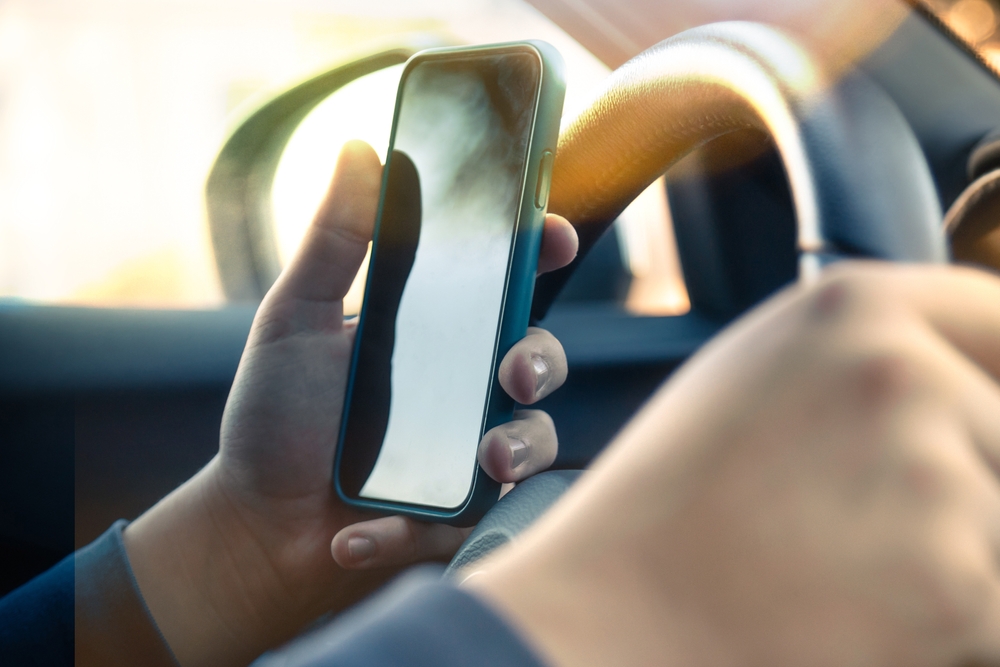Remember the Dangers of Distracted Driving
April is National Distracted Driving Awareness Month. In its 11th year, the program was created out of an unthinkable tragedy.
In 2008, an elementary school-age child in Colorado was killed as she pedaled home from school on her bicycle. A neighbor looking at her cell phone as she drove hit the nine-year-old when the little girl was just a few pedals away from her front door.

After the crash, the girl’s mother moved through her grief by speaking out against distracted driving and cell phone use. She pushed state lawmakers, including U.S. Representative Betsy Markey of Fort Collins, CO, to recognize the need for more regulations against distracted driving.
Her advocacy led to the creation of “Erica’s Law,’’ Markey’s 2010 Congressional resolution. Named after the young victim, Erica’s Law established the month of April as National Distracted Driving Awareness Month.
The first one was held in 2011.
Fast Forward to April 2022
As Americans celebrate spring, they are also enjoying the first April since 2019 without severe COVID-19 restrictions. They gather with friends and families, take spring break trips, or attend art shows and music festivals.
However, as the number of COVID-19 cases continues to decrease, making it safer for people to resume these activities, it is important for everyone to also stay safe on the roads. Experts believe our roads are the most dangerous they have been in years. On a typical day, eight people are killed, and hundreds more are injured in the U.S. in distraction-affected crashes. According to the National Highway Traffic Safety Administration (NHTSA), more than 3,000 people are killed each year by distracted drivers.
How To Stop Distracted Driving
Whether texting on a cell phone, letting your mind wander or even reaching for something in your car, remember, anything that takes your main focus from driving is a distraction.
The Bottom line: Whether drivers want to accept it or not, they will not be safe unless they give their full attention to the task of driving. Any non-driving activity is a potential distraction and increases the risk of a crash.
Know the types of distracted driving: According to the Centers for Disease Control and Prevention (CDC), there are three main types of distractions, visual (taking your eyes away from the road), manual (taking your hands off the steering wheel) and cognitive (taking your mind off driving).
Therefore, to stay safe, do not multitask while driving. Prepare your car before turning it on by adjusting the mirrors, fastening your seat belts, and if you want to listen to the radio, select the programming before you drive.
Hang up the bad habit: While all three types of distractions can lead to serious injuries, in the last decade, there has been a severe uptick in the number of crashes due to people using their cell phones while driving. According to the National Conference of State Legislatures, about 80 percent of people in the U.S. with cell phones use them while driving. Yet, at the same time, experts know that before a crash, drivers typically spend nearly five seconds looking at their devices, enough time at typical highway speeds to cover more than the length of a football field.
If it seems impossible for you to break the habit, consider installing a program on your phone to help you break it. Most wireless plans offer blocking apps that can stop phone use while the car is in motion. There are also devices you can install directly into the vehicle. This technology creates a “geofence,” a virtual barrier, around the driver to stop their cell phone use.
Have co-pilots: As the driver, you are accepting the responsibility of keeping yourself and everyone around you safe, but there is no reason you can’t enlist your passengers to help. Let them help you navigate, manage the radio station or podcast and be in charge of keeping you focused on the road.
Supporting our youngest drivers: As a parent or caregiver, you should be the first line of defense for your new teen driver, and you should talk with them about how distracted driving is especially deadly for their age group.
Point out what causes distractions, including having other people in the car, applying makeup and eating. Emphasize, over and over, that texts and phone calls can wait until arriving at a destination.
And one last tip: Since it is not always easy to talk to your kids about rules, let the NHTSA help you. Use this designated month of April as a reason to visit its site to review facts with your young driver and together take the pledge to drive distraction-free.







